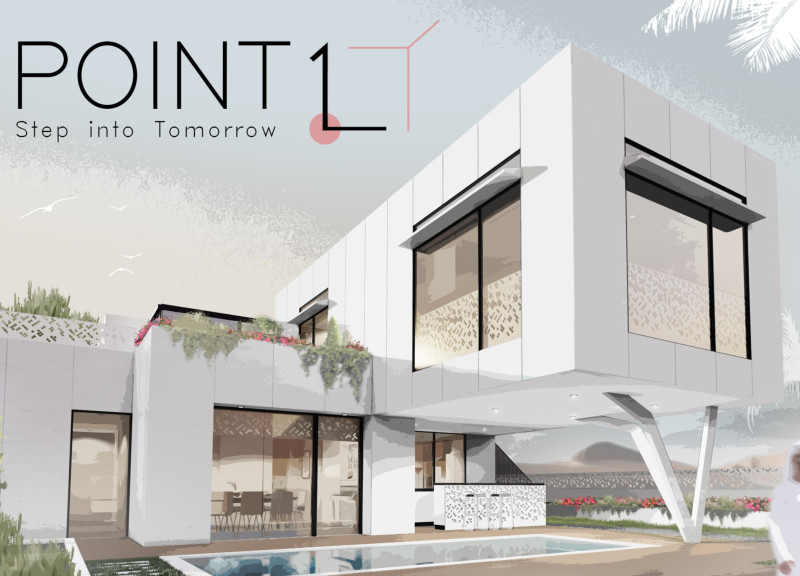5 key facts about this project
The project is designed around several key concepts, including community engagement, ecological sensitivity, and a contemporary aesthetic. At its core, the architecture functions as a catalyst for interaction, encouraging a sense of belonging among its inhabitants and visitors. This is achieved through open and inviting public spaces, seamlessly connecting different activities and fostering collaboration among residents and businesses alike.
One of the most important aspects of this project is its spatial organization. The layout is meticulously planned to ensure a fluid circulation pattern. Key areas, such as entrances, lobbies, and communal spaces, are deliberately positioned to facilitate easy access and movement. The design incorporates expansive windows and permeable boundaries, which not only enhance natural light but also visually connect the indoor spaces with the outdoor environment. This blurs the lines between the internal and external realms, inviting nature inside and allowing users to fully engage with their surroundings.
The building's façade is another significant detail that warrants attention. It features a juxtaposition of materials, combining natural elements such as stone and timber with sleek glass and steel. This careful selection of materials not only contributes to the aesthetic appeal but also underscores the project's commitment to sustainability. The use of local materials and sustainable practices enhances the building's contextual relevance, anchoring it within its geographical location while promoting environmental responsibility.
In terms of sustainability, the design incorporates numerous eco-friendly strategies that reflect contemporary architectural ideals. These include passive solar design techniques, such as strategically placed overhangs and thermal mass elements, which optimize energy efficiency throughout the year. The incorporation of green roofs and rainwater harvesting systems demonstrates a proactive approach to environmental stewardship, contributing to the building’s self-sufficiency and reducing its ecological footprint.
Unique design approaches are evident throughout the project, particularly in its community-oriented features. The architecture includes multifunctional spaces that can adapt to various uses, thereby promoting versatility and resilience. For instance, communal gardens and outdoor terraces are designed to serve as gathering spaces for residents, fostering a sense of community and encouraging social interactions. These areas are thoughtfully integrated into the overall landscape, providing tranquil retreats amidst the urban hustle.
The interior design maintains the same ethos as the exterior, characterized by an emphasis on simplicity and functionality. Interiors feature an open-plan layout that allows for flexible use of space, complemented by thoughtfully selected furnishings that promote comfort and accessibility. Material choices within the interiors prioritize sustainability, with finishes that are both durable and aesthetically pleasing.
Overall, this architectural project is a culmination of innovative ideas and practical solutions, reflecting a deep understanding of the needs of its users and the surrounding environment. The careful attention to detail in every aspect of the design—from spatial layout and material selection to sustainability features and community engagement—illustrates a comprehensive approach to modern architecture. Interested readers are encouraged to explore the project presentation further, delving into architectural plans, sections, and visual designs to gain a deeper understanding of the architectural ideas and intentions that underpin this significant work.


 Wael Bousmael
Wael Bousmael 




















